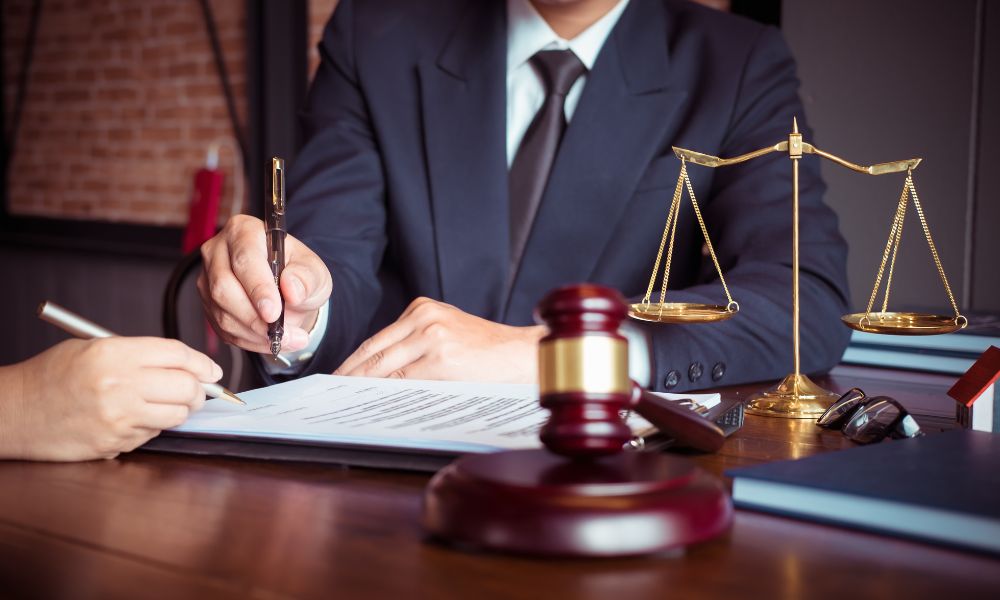Serious crashes upend lives in seconds, and the path to fair compensation isn’t always straightforward. Riverside Car Accident Injury Attorneys help victims navigate insurance negotiations, prove fault, and recover for medical bills, lost wages, and pain. This overview breaks down the most common accident scenarios in Riverside, the traps and tactics seen in claims, what’s new in California traffic law for 2025, and what injury documentation and settlement timelines really look like. Firms such as Ochoa & Calderon, respected Riverside Car Accident Injury Attorneys, use these strategies daily to protect clients and maximize outcomes.
Common types of car accident cases seen in Riverside courts
Riverside’s mix of busy freeways (SR-91, I-215, SR-60) and high-traffic arterials (Van Buren Blvd., Magnolia Ave., La Sierra Ave., and Tyler St.) leads to a familiar roster of cases in local courts.
- Rear-end collisions: Often tied to distracted driving, sudden slowdowns on the 91, or tailgating. Whiplash, shoulder injuries, and mild traumatic brain injuries (mTBI) are common, especially when impact seems “minor” but forces are significant.
- Intersection and left-turn crashes: High frequency at multi-lane intersections where visibility and timing matter. Disputes typically center on signal phase, right-of-way, and whether a driver tried to “beat the yellow.”
- Broadside (T-bone) impacts: Severe injuries due to limited side protection. Claims often hinge on traffic camera footage (if available) and witness placement.
- High-speed freeway wrecks: Lane changes without clearance, abrupt merges, and speed variance lead to chain reactions. Event Data Recorder (EDR) downloads can be crucial.
- DUI incidents: Night and weekend spikes persist. A DUI conviction can affect civil liability and, in certain cases, damages recovery.
- Hit-and-run: Surveillance (nearby businesses, gas stations), 911 audio, and license plate reader data can make or break identification. Uninsured motorist (UM) coverage frequently applies if the at-fault driver isn’t found.
- Rideshare collisions: Claims navigate Uber/Lyft insurance tiers, coverage can jump to $1 million when the ride is in progress.
- Dangerous road or government liability: Poor sightlines, faded markings, broken signals, or debris can support a “dangerous condition of public property” claim against a public entity (special notice deadlines apply).
These scenarios often intertwine. A typical case might involve a distracted driver speeding through a yellow, a disputed light, and an injured rideshare passenger, all of which call for targeted evidence collection and expert analysis.
Insurance claim challenges and how attorneys can assist
Insurance adjusters move fast to control the narrative. Common hurdles include:
- Recorded statements: Early calls are designed to elicit admissions or minimize symptoms. Attorneys usually handle communications to prevent mischaracterizations.
- Comparative fault: California uses pure comparative negligence, so an insurer may allege partial blame (even 10–20%) to shave thousands off a payout. Counsel pushes back with scene measurements, vehicle damage analysis, and expert opinions.
- Gaps in treatment: Insurers pounce on delayed care. A lawyer helps clients document symptoms from day one, coordinate specialists, and avoid avoidable gaps.
- Low policy limits or underinsured drivers: Many drivers carry minimum coverage. UM/UIM claims can bridge the gap, but California’s underinsured motorist benefits offset against the at-fault’s limits (no true stacking). Strategy matters.
- Medical liens and billing disputes: Hospital liens, health plan subrogation, and med-pay coordination can drain settlements. Attorneys negotiate lien reductions so more money reaches the client.
- Time-limited demands: Properly crafted policy-limits demands under California Code of Civil Procedure section 999 can trigger an insurer’s duty to settle. When done right, they set clear terms and a reasonable response window, creating leverage if the carrier drags its feet.
What attorneys actually do day-to-day:
- Secure evidence early: Scene photos, 911 calls, traffic cam requests, vehicle telematics (EDR), and preservation letters to stop data from being overwritten.
- Manage experts: Accident reconstruction, human factors, and treating physicians to clarify causation and injury mechanics.
- Tell a compelling damages story: Beyond bills and records, work limitations, missed promotions, childcare help, and the human toll presented credibly (not theatrically).
The result is a cleaner liability picture and a claim package that’s harder to discount.
How California traffic law changes in 2025 affect accident claims
A few key developments in 2025 change the math for many Riverside cases:
- Higher auto liability minimums (SB 1107): Effective January 1, 2025, California’s required minimum auto liability limits increased from 15/30/5 to 30/60/15. Practically, that means more coverage available for many injury claims, especially valuable in moderate-injury crashes that previously exhausted limits quickly.
- Speed safety camera pilots (AB 645): Several cities (e.g., Los Angeles, San Francisco, Oakland, San Jose, Glendale, Long Beach) are piloting speed cameras. Riverside isn’t a pilot city, but claimants should know these systems issue civil penalties and may generate speed/violation data. Access for civil cases is privacy- and retention-limited, but in lawsuits arising from pilot zones, attorneys may seek footage or corroborating logs where permitted.
- Speed limit setting reforms (AB 43) continue to roll out: Cities can lower limits in safety corridors and business districts. For drivers, “I didn’t know the limit changed” won’t help: for claims, updated posted limits can support negligence per se when speeding is involved.
Other ongoing rules still shaping claims:
- Hands-free enforcement places a point on a driver’s record for repeat violations within 36 months.
- Prop 213 generally bars uninsured drivers from non-economic damages (pain and suffering) against at-fault motorists, subject to narrow exceptions (for example, where the at-fault driver is convicted of DUI).
Bottom line: More available insurance in 2025 often improves settlement potential, while evolving speed policies make speed evidence more objective in some corridors.
Why medical documentation is essential for injury compensation
Injury cases are won (or whittled down) on the quality of medical proof. Solid documentation connects the dots between the crash and the symptoms.
What insurers and juries expect to see:
- Prompt evaluation: ER/urgent care visits or a same-week primary care appointment. Delays invite the argument that something else caused the pain.
- Diagnostic clarity: Imaging (X-ray, MRI), neurocognitive screening for suspected mTBI, and specialist consults when indicated.
- Causation opinions: Treaters should explain how mechanism of injury (e.g., lateral impact) plausibly caused the diagnosis, using clear language, not jargon.
- Consistent charting: Progress notes track pain levels, function, and limitations at work/home. Inconsistent records can sink credibility.
- No “gaps” without explanation: Travel, childcare, or authorization delays should be noted in the chart so your absence from therapy isn’t misconstrued.
- Functional impacts: Work restrictions, missed shifts, lifting limits, and activities of daily living. These support wage loss and general damages.
Helpful extras:
- A brief pain/activity journal can anchor testimony months later.
- Keep receipts: OTC meds, braces, rideshares to treatment, small items add up.
Attorneys often coordinate care with reputable providers, ensure records contain the necessary causation language, and request narrative reports that insurance evaluators actually read.
Settlement timelines and what crash victims should anticipate
Every case is different, but there’s a rhythm most Riverside car accident claims follow.
- Initial treatment and investigation (0–3 months): Focus on medical stabilization and evidence preservation. Liability clarity and early imaging drive value.
- Active treatment and demand prep (3–6 months): Once injuries reach a plateau or a clear treatment plan is set, counsel compiles records, bills, and a demand package to the insurer.
- Negotiation window (6–9 months): Many claims resolve here, especially if injuries are moderate and policy limits are adequate. Time-limited demands may be used to accelerate resolution.
- Litigation (if needed) (9–24 months): Filing suit triggers discovery, depositions, expert work, and possibly mediation. Trial dates in Riverside County vary, but a realistic window is 12–18 months post-filing.
Key timing rules to know in California:
- Statute of limitations for bodily injury: 2 years from the crash (exceptions for minors and a few others).
- Government claims: If a public entity may be liable (road defects, government vehicle), a Government Tort Claim typically must be filed within 6 months, miss it and the case may be over before it starts.
- Property damage: 3-year limitation.
- UM/UIM: Check policy-specific deadlines for arbitration demands: don’t assume the standard injury statute applies.
What affects speed and value:
- Clear liability + bigger limits = faster resolutions.
- Multiple providers or surgery recommendations require more records and time.
- High liens (ER bills, health plans) demand negotiation before disbursement.
Victims should anticipate regular updates, a few rounds of negotiation, and, if litigation is filed, occasional lulls followed by bursts of activity leading up to mediation or trial.

